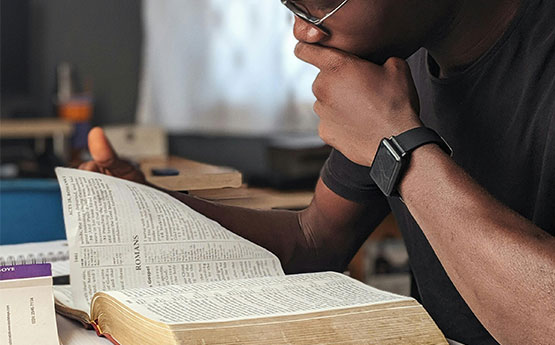As a student you will almost certainly be faced with an overwhelming amount of reading material. Reading lists full of journal articles, reference books and online resources can seem daunting. There are though, several techniques you can employ in order to become a more effective and efficient reader.
Read with the question in mind
Just as you should always write with the essay title in mind, your reading should be guided by the question you are working on.
Before you dive into your books, it is worth spending some time thinking about how you want to answer the question. Make a rough plan. Divide your answer up into sections, then target your reading so that you have an even spread of material relating to each part of the essay.
Obviously you will have to be flexible when using this approach, as during the course of your research you might decide to change your approach to the question.
Locate key passages
We’ll let you into a little secret. You very rarely have to read all of a text to find the information you need. Once you have decided on the key terms for your essay, you should spend some time sourcing the areas of your reading list that will be most relevant to you. Here are a few techniques you can use to locate passages in a text that will be key to your essay.
Time to get serious!
You can’t avoid the fact that at some point, you are going to have to read in more detail. Once you have located the texts likely to be most useful to you by using the techniques above, it’s time to get down to some serious reading.
To ensure you get the most from your reading you should try and engage as fully with the text as possible. This involves taking notes, but there are effective and not so effective ways to take notes as you read. Here are a few tips:
- Read the whole text through once first without taking any notes. Too many students start to underline everything straight away. This can make it difficult to differentiate between really important and not so important points. Put down you highlighter the first time you read something.
- Distinguish between different elements of the text. If you underline everything of importance in a text in the same colour it can make it very difficult to return to the information when you need it. You could highlight arguments for a subject in one colour and arguments against it in another, or box off potentially useful sources.
- Summarise. Summarising a point or an argument in your own words as you go is one of the most useful reading techniques. This could take the form of a note in the margin or a post-it note on a page. When you have finished reading a section of text you should write a short summary of everything. By engaging with it in this way you really begin to understand it. It can also be useful to mention whether you agree or not with what is being said.
Obviously the reading for every different subject area differs in some way, but applying the techniques above should help you feel less daunted next time you receive a 2 page long reading list from your lecturer!


